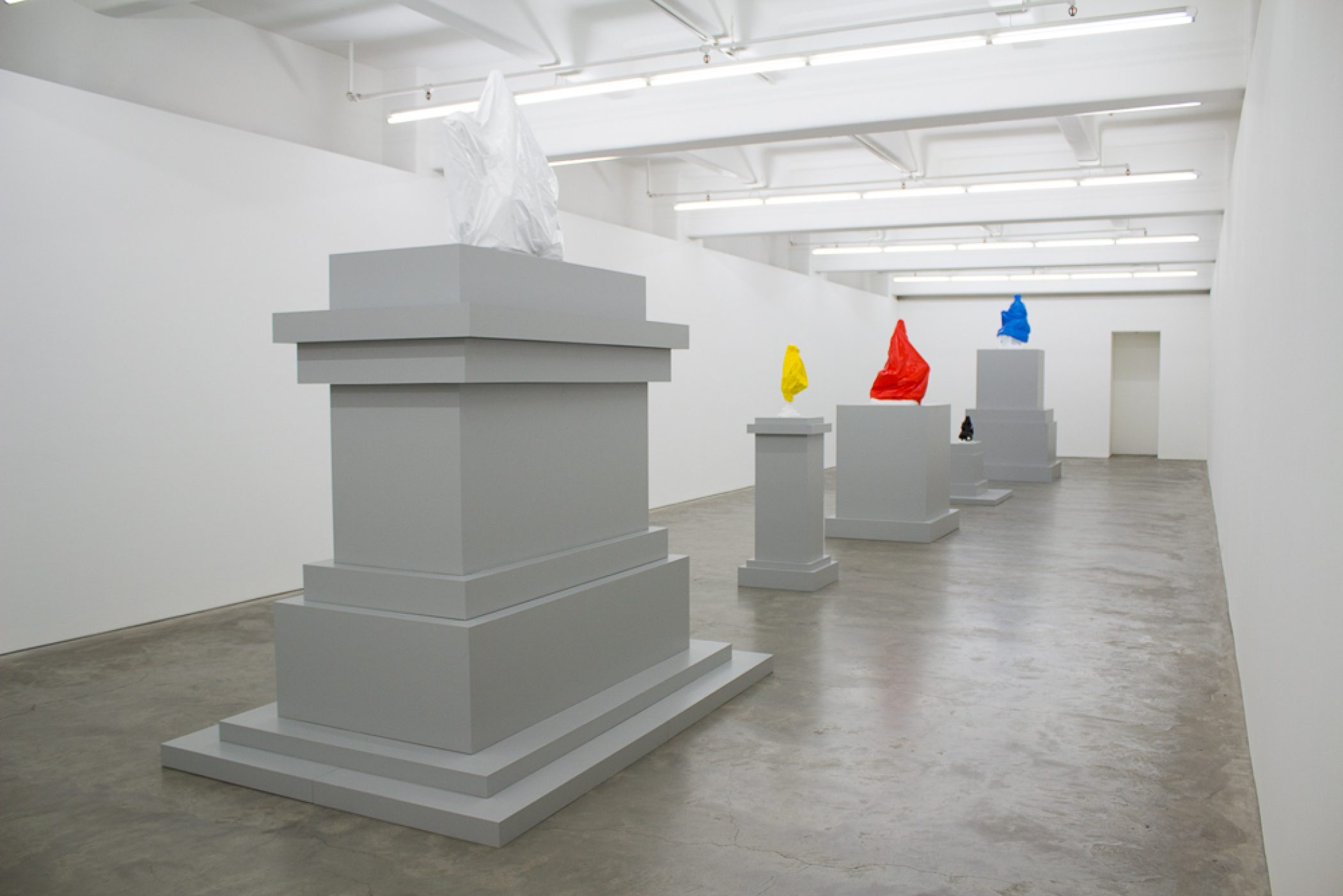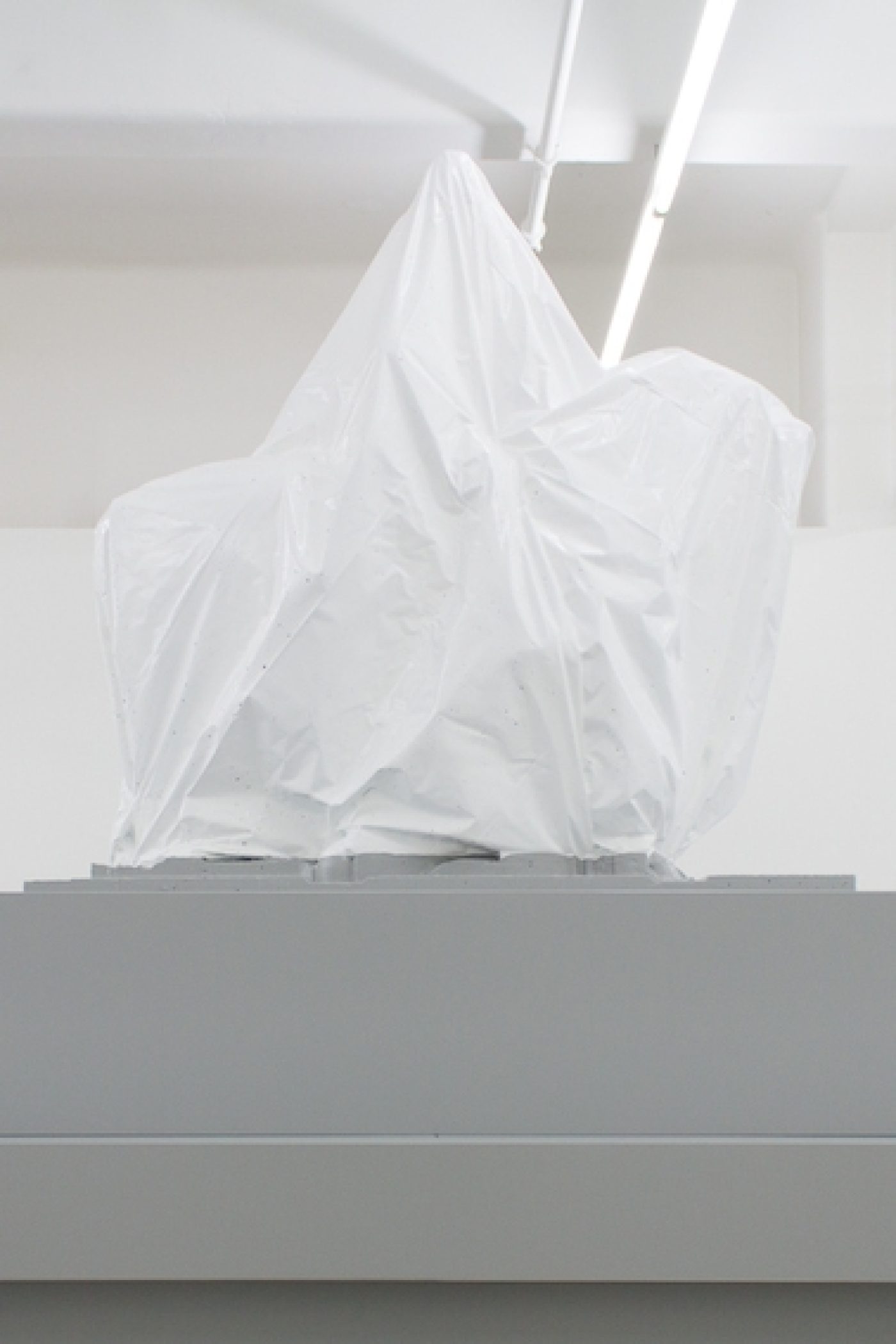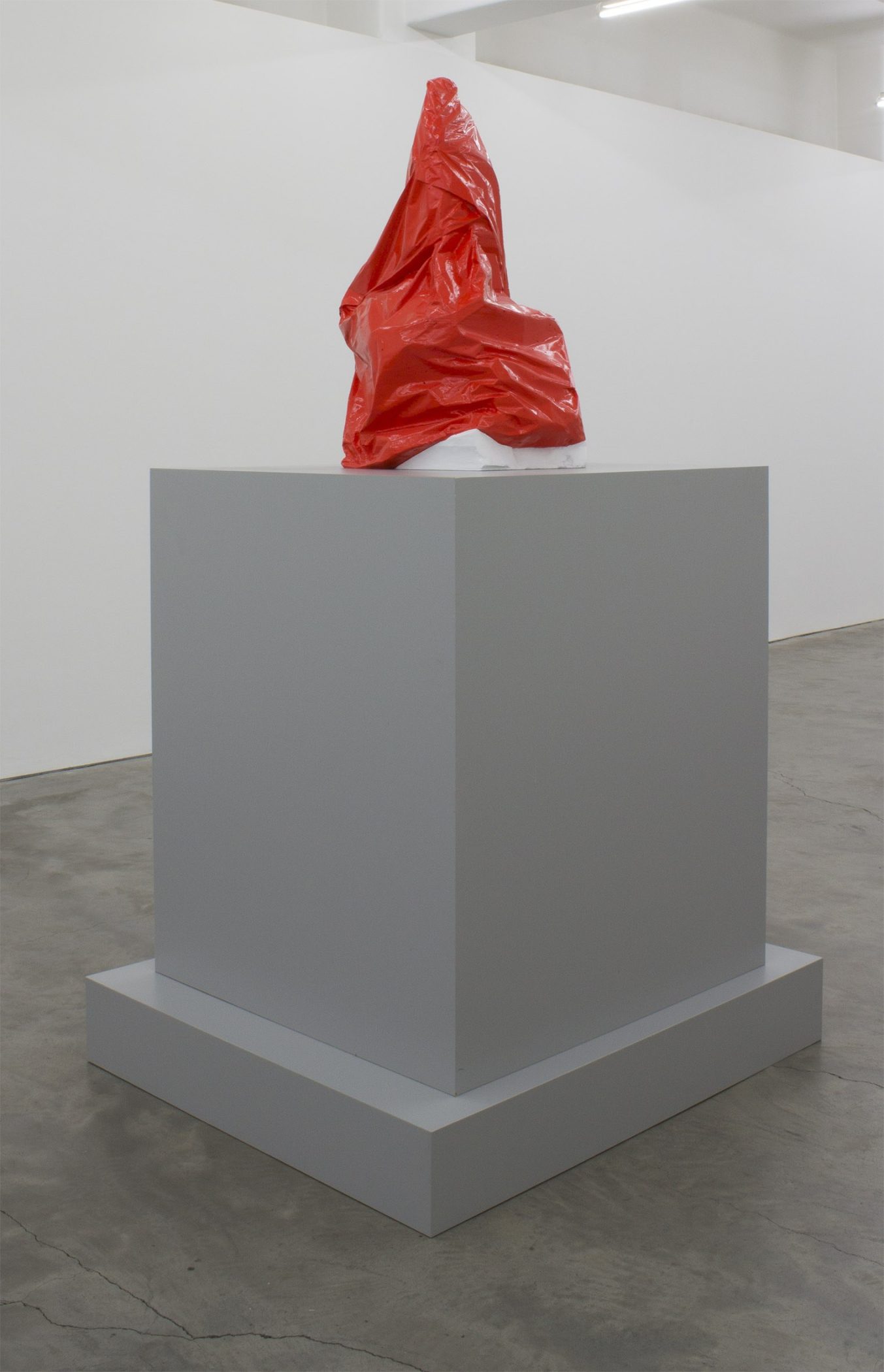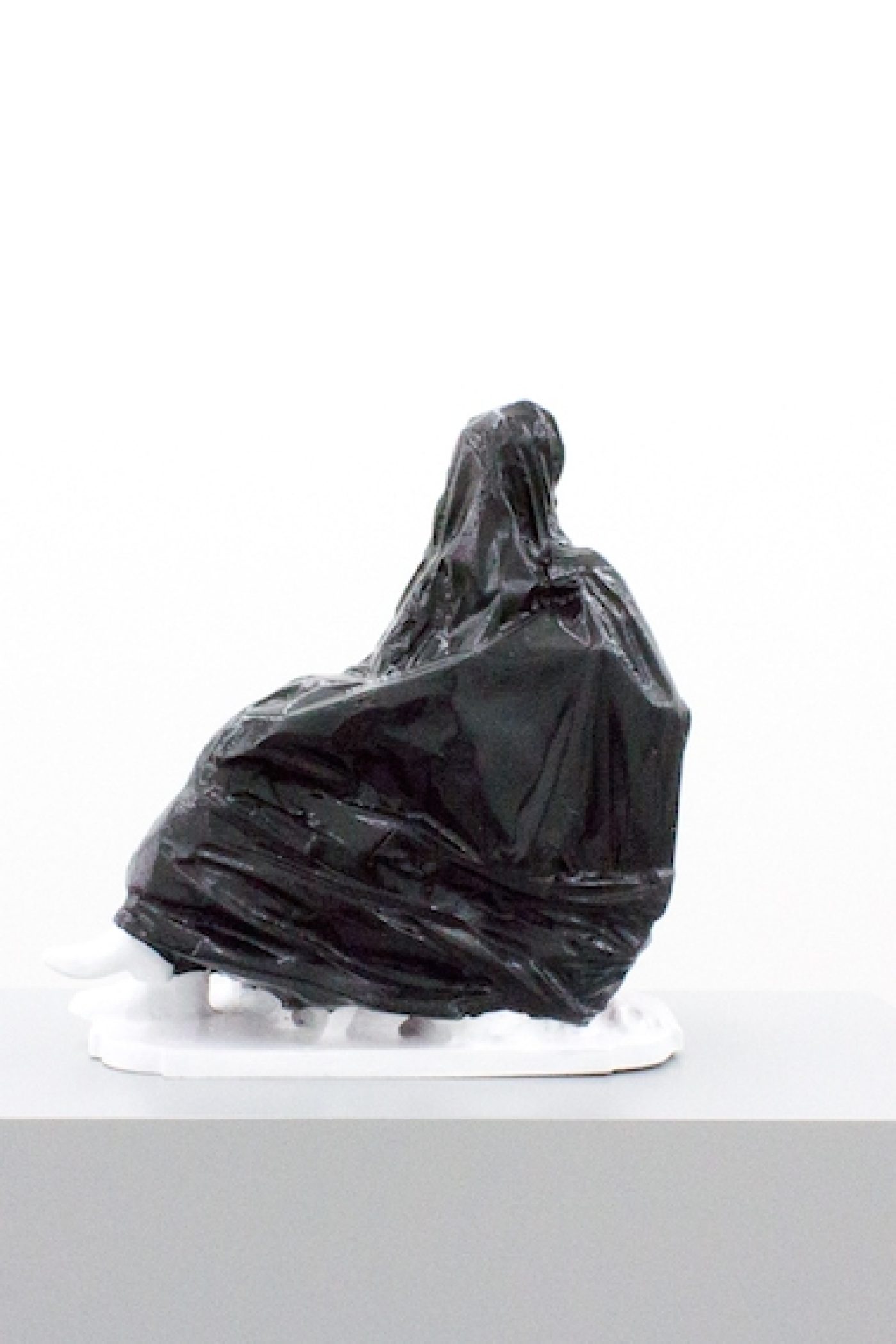Callum Morton
Neighbourhood Watch
1st May – 28th June 2014
Anna Schwartz Gallery
Callum Morton’s ‘Neighbourhood Watch’ refers to particular sculptural monuments in the City of Melbourne. A continuation of his recent series Cover Up, these new works are altered reproductions of existing statues, erected as memorials to Burke and Wills, Matthew Flinders, Adam Lindsay Gordon, the Marquis of Linlithgow, and Captain Cook. Re-scaled at a quarter of their original size, on pedestals scaled down to half-size, each of Morton’s selected monuments is represented under wraps. Only their feet and parts of weight-bearing sculptural devices remain visible under their saturated, plastic-coloured, glazed shrouds.
For his previous exhibition at Anna Schwartz Gallery, ‘Evacuations’ (2012), Morton used the size, shape and colour of the most recent exhibition there, of paintings, as the basis for his own new work. As a gesture toward the many functions of the private gallery, the works suggested that each exhibition was not simply a new selection of works in a known space, but instead, that each installation created the space anew, affording a different experience with each viewing encounter. In the current exhibition, Morton looks outward, around the neighbourhood in the vicinity of the gallery. In the centre of the sprawling state capital, the gallery’s neighbourhood is the business district, a retail and commercial hub, a place of leisure, and a centre of government and administration. As such, it is also a historical neighbourhood, one whose public monuments tell those stories that previous city authorities wished to tell their constituency about itself. These are stories of power: military and colonial, scientific and cultural. But they are seldom remembered in detail and clarity. Instead, the monuments erected to these great and/or fallible historic figures are often passed by unnoticed, used today only as meeting points or lunchtime pews.
Morton’s work has consistently addressed the ‘architecture of experience’, the moment of encounter between viewer and object, or viewer and built environment. The work has often taken the shape of other artworks or designs, and replayed the viewing experience in a way that transforms it into a skewed version of itself: consider the contrast in scale and mood of Valhalla in Venice (2007); or the down-scaled Hotel (2008), driven past at speed, on the Eastlink Freeway; or re-zoning of a university museum into an impossible site of nostalgic-futuristic entertainment in Silverscreen (2011); or the re-materialisation of knowledge and how ‘research’ is performed, suggested by The Other Side at the Biennale of Sydney (2014). Situated on this particular site, ‘Neighbourhood Watch’ also recalls Gas and Fuel (2002), Morton’s animated model-like sculptural rendering of that eponymous building which stood heavily on the current site of the National Gallery of Victoria’s Ian Potter Centre, only one city block away, like the present monuments, a civic icon of equivocal meaning. Appreciated by a few, reviled by many, but for the most part, simply ignored as part of daily life in Melbourne’s ever-changing urban landscape.
The works in this exhibition have evolved from a collaborative public project, Monument Park at Docklands, to be launched later this year. In ‘Neighbourhood Watch’, Morton brings the skewed encounter back into the gallery, in a mode that presents these works distorted in size, not yet ready to be seen, in storage, or perhaps even censored. In any of these cases, the hidden monument suddenly becomes more visible; curiosity and anticipation are piqued; and the function of the monument – to memorialise, to be a reminder – is remembered…even if its subject is not. Morton reminds the viewer that the artwork, and particularly the monument, is never entirely finished. Any story told in public space will be re-told, by both contemporaneous and future audiences. In this sense, Callum Morton’s works in Neighbourhood Watch also constitute proposals for the future.
Images

Callum Morton
Neighbourhood Watch, 2014
installation view, Anna Schwartz Gallery

Callum Morton
Cover Up #13 (ML), 2014
Polyurethane, resin, waterborne enamel, varnish, synthetic polymer paint, wood
Sculpture: 91.5 x 92 x 36.5 cm, plinth: 215 x 174 x 264 cm
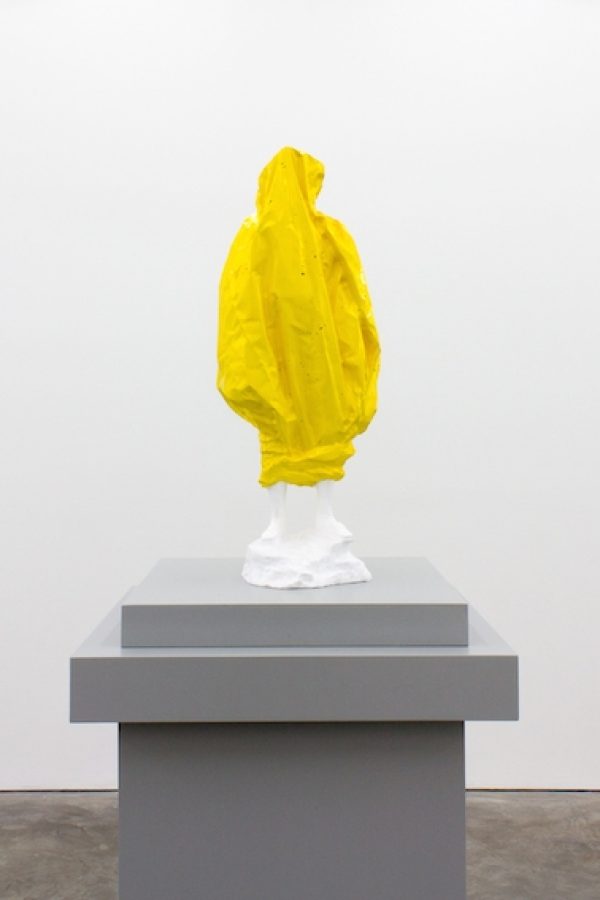
Callum Morton
Cover Up #14 (CC), 2014
polyurethane, resin, waterborne enamel, varnish, synthetic polymer paint, wood
sculpture: 58 x 23 x 23 cm, plinth: 132.5 x 63.5 x 60.5 cm

Callum Morton
Cover Up #15 (MF), 2014
polyurethane, resin, waterborne enamel, varnish, synthetic polymer paint, wood
sculpture: 91 x 62 x 45 cm, plinth: 137 x 112 x 132 cm

Callum Morton
Cover Up #16 (ALG), 2014
Sculpture: 37 x 36 x 20, plinth: 78 x 110 x 142 cm
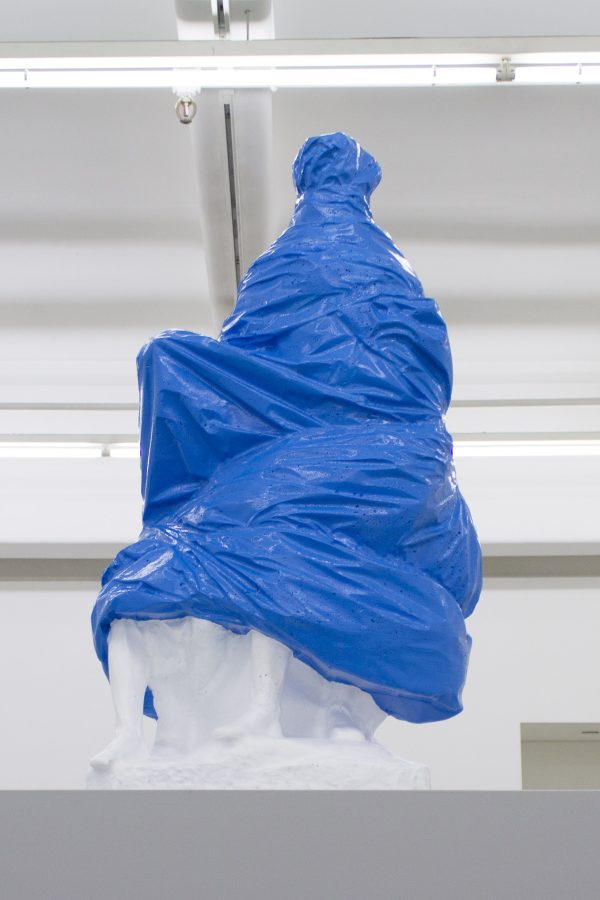
Callum Morton
Cover Up #17 (BW), 2014
polyurethane, resin, waterborne enamel, varnish, synthetic polymer paint, wood
sculpture: 92.5 x 55 x 43 cm, plinth: 215 x 157.5 x 141.5 cm
